
- Jordan Mason shines in his opportunities: Mason has been able to make big plays during his three-year career, regardless of whether he’s only touching the ball once or twice per game, or when he was the San Francisco 49ers‘ primary starter.
- Mason joins the Minnesota Vikings: Mason will compete with Aaron Jones Sr. for carries in the offense, and based on both of their recent performances, Mason should lead the team in carries.
- Subscribe to PFF+: Get access to player grades, PFF Premium Stats, fantasy football rankings, all of the PFF fantasy draft research tools and more!
Estimated Reading Time: 5 minutes

PFF’s Fantasy Football Player Profile series delivers the most in-depth fantasy football analysis available for the 2025 season.
Using PFF’s exclusive data, we evaluate player performance, competition for touches and how teammates and coaching staffs
Last updated: 7:15 a.m. Sunday, June 1
Player performance
Jordan Mason was an undrafted rookie who signed with the San Francisco 49ers in 2022. Elijah Mitchell was the breakout running back for the 49ers in 2021, but he was dealing with a hamstring injury during training camp and suffered an MCL sprain early in Week 1, opening the door for other running backs. Mason earned a 90.2 rushing grade in preseason, leading the team to move on from 2021 third-round pick Trey Sermon and JaMycal Hasty. The 49ers brought in Tevin Coleman to back up Jeff Wilson Jr., which left Mason low on the depth chart. By midseason, the 49ers completely changed their backfield, trading for Christian McCaffrey, trading away Wilson, and elevating Mason to the primary backup.
Mason did an excellent job on his limited snaps, earning a 90.6 grade and averaging 6.0 yards per carry. In 2023, Mason fell to third on the depth chart with Mitchell’s return. Mitchell missed some time, allowing Mason to be a primary backup, and he played at a high level, like in 2022. There was talk heading into 2024 that Mason would replace Mitchell as the primary backup to McCaffrey. Mitchell ended up suffering a season-ending injury, allowing Mason to be the primary backup. McCaffrey was dealing with an Achilles sprain to start the season, elevating Mason to the top back on the depth chart.
Mason was a top-six fantasy running back over the first five weeks of the season. He fumbled three times over the season, which lowered his PFF rushing grade, and there was some expected regression in his rushing efficiency over a larger sample size, but for the most part, he continues his electric play. He broke long runs at an elite rate, ran for at least 70 rushing yards in six of his first seven games and averaged at least 4.1 yards per carry each week. He didn’t develop much as a receiver, finishing with one or two receptions each week.
Unfortunately, Mason suffered a shoulder injury in Week 6 and re-injured it in Week 7. McCaffrey was able to return for a four-week stretch, bringing Mason to a backup role. It’s worth noting that any of his per-game metrics from 2024 include him being a backup for nearly half of his games. McCaffrey suffered a season-ending injury in Week 13, leading Mason to run 13 times for 78 yards, but then Mason was dealt a season-ending high-ankle sprain.
Mason averaged 90.7 rushing yards per start, fourth-best among running backs last season. That included 63.2 yards after contact, third best, and five avoided tackles in the run game per start, second best.
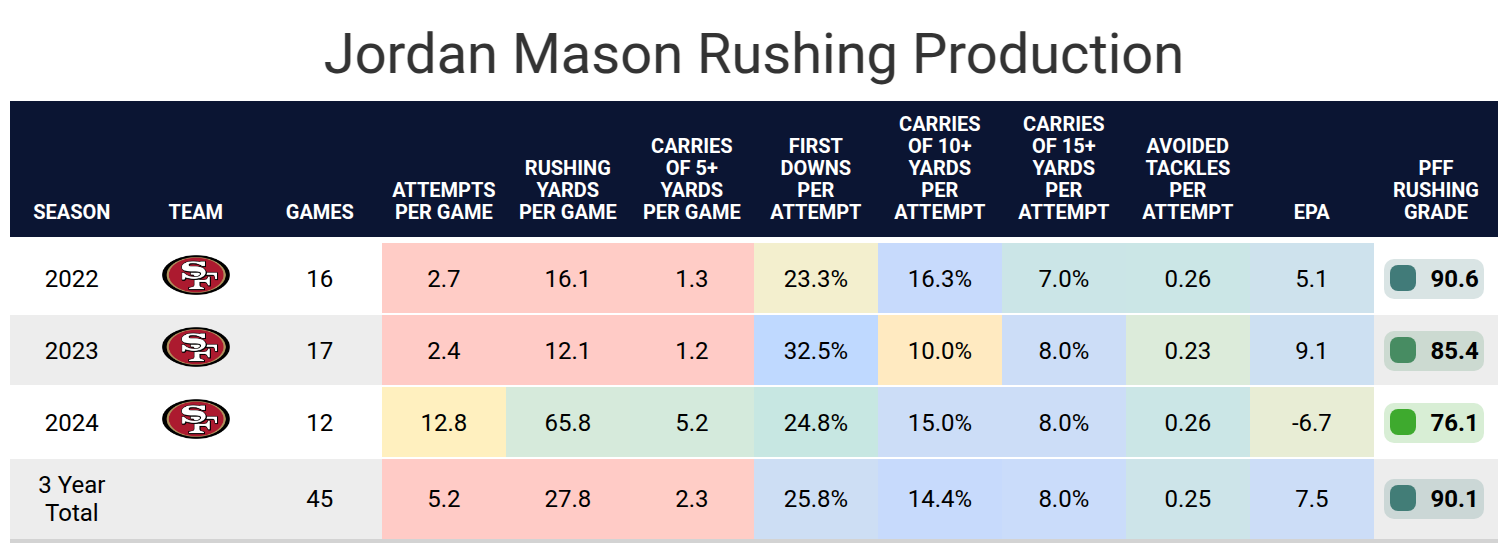
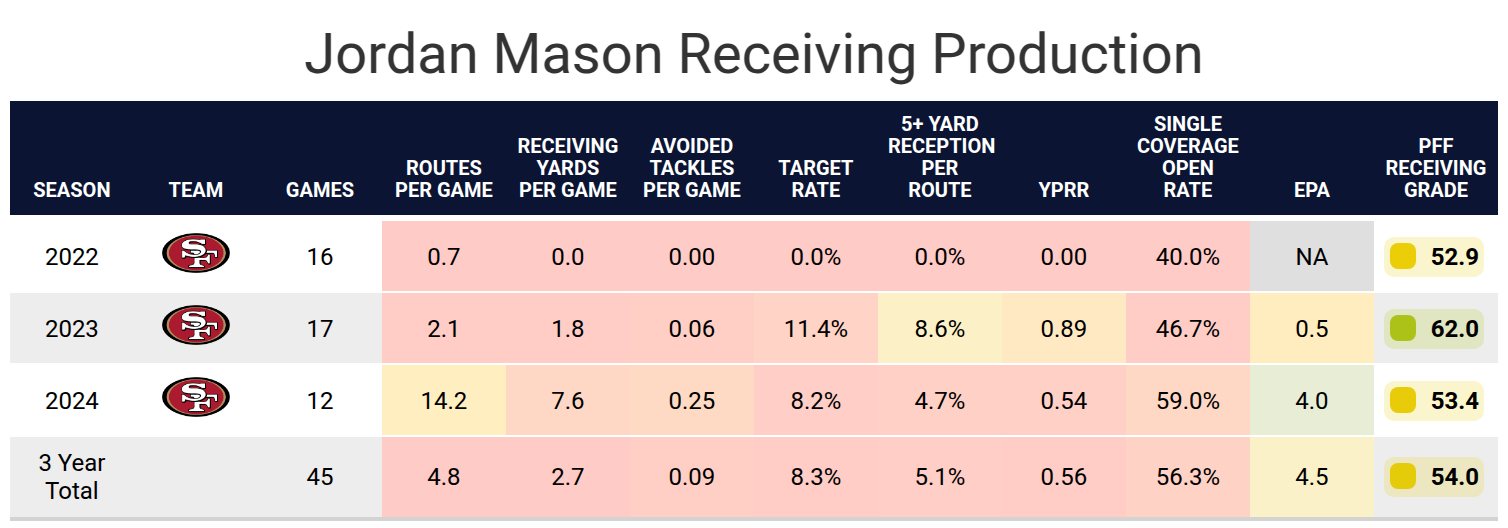
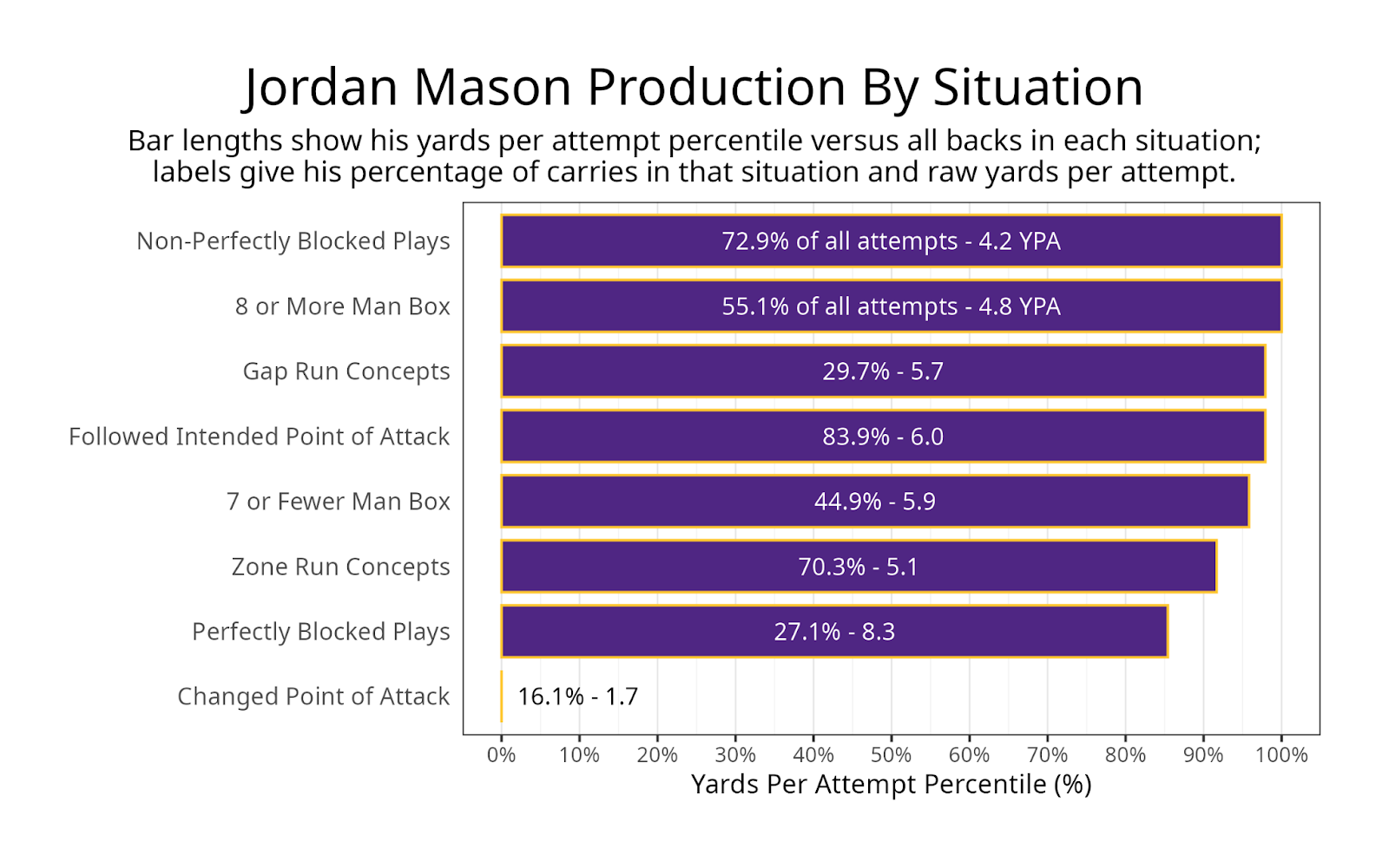
Projected role
Mason was traded to the Minnesota Vikings this offseason, allowing Mason to no longer back up McCaffrey with a chance for more playing time. The Vikings’ lead running back last season was Aaron Jones Sr., who spent most of his career in a two-back committee. Jones has dealt with hamstring, MCL, hip, rib and quad injuries over the last two seasons and is 30 years old.
Mason has been an early down back throughout his NFL career, while Jones has been more well-rounded. Jones gained 408 receiving yards last season, which was the most for him since 2019. While Jones has graded very well as a runner for most of his career, he’s shown signs of decline to an average runner in recent seasons. It seems likely that the backfield split will include Mason seeing significant work on early downs and Jones seeing significant work in passing situations.
If Jones were to get injured, we could see Mason having a similar role to his five weeks as a starter with San Francisco. C.J. Ham has taken significant work on third downs as a pass protector in recent seasons, and he would probably take the third downs from Mason. Ty Chandler would be Mason’s backup, but Mason would probably be given as much work as the Vikings think he could handle in that situation.


Impact of teammates
Mason joins a Minnesota Vikings team with a high-scoring offense that typically runs a good number of plays. They don’t have a high rate of throwing to running backs, but Mason wasn’t going to see many targets even if they had a high rate. The one concern is they’ve consistently had a pass-heavy offense. That might change slightly as they ease J.J. McCarthy into action, but their pass rate has remained high even with backups at quarterback. O’Connell has had no problem shaking up his running back rotation from one week to the next, which should be good news for Mason because if he’s playing well, that should lead to more playing time.
The Vikings had a relatively average offensive line last season, which should be notably better this season, depending on how quickly the line can gain chemistry. Their best run blocker, Christian Darrisaw, missed over half of last season. The Vikings’ guards were underwhelming last season, so they upgraded with Will Fries in one spot. It’s hard to predict exactly how well a rookie offensive lineman will do in their first season, but first-round rookie Donovan Jackson should be an upgrade at the left guard spot. The 49ers always had a top-10 offensive line when Mason was on the team, so if anything, this could be a step down for him.
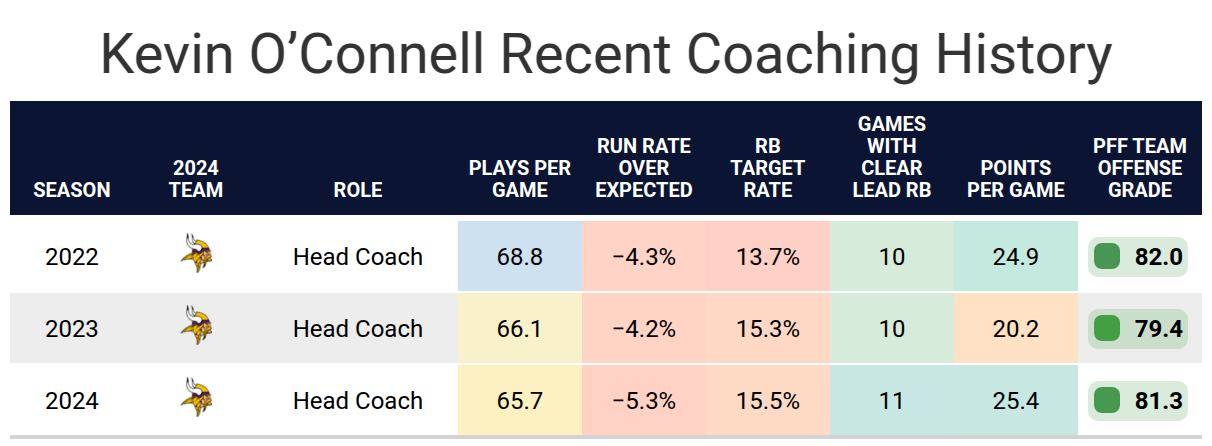
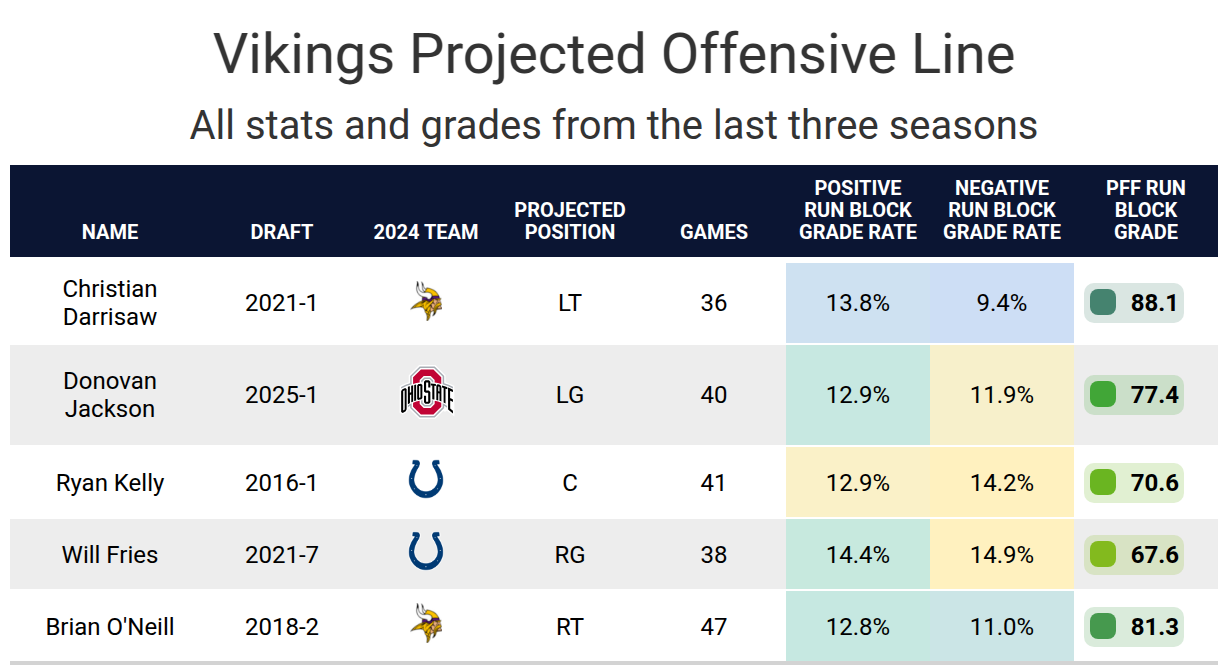
Bottom line
It’s yet to be determined exactly how snaps will be distributed between Mason and Aaron Jones Sr., but there is a chance Mason is the better fantasy back if both are healthy, and he is likely to be a fantasy starter if injuries continue to disrupt Jones’ career.

Footnotes
- Statistics in tables and charts were chosen based on their ability to predict future fantasy performance on a per-game or per-opportunity basis or to describe the player relative to others at the same position.
- “Opportunities” are defined as passing dropbacks, rushing attempts and routes run as a receiver.
- Numbers are provided either by season or based on the past three years. For rookies, only college statistics are included. For non-rookies, only NFL statistics are considered, regardless of whether they played in college within the previous three years.
- As college competition is easier than NFL competition, most rookies are likely to see a decline from their historical numbers.
- Only FBS data is considered for college players and comparisons.
- Kneel-downs are removed from rushing data to provide cleaner quarterback rushing rate statistics.
- The table colors in this article range from blue (indicating good/high) to red (indicating bad/low).
- All percentiles and color codings compare the given player to others with a high sample of opportunities. Generally, the cutoff is one-third of the possible opportunities in the sample. If a player does not meet the threshold, they are still included in the comparison, though their results may appear better or worse than expected due to the smaller, less predictive sample size.
- Information on utilization classifications and their importance can be found here for running backs, wide receivers and tight ends.
This news was originally published on this post .




Be the first to leave a comment